As summer turns to autumn, flowers are conspicuous in the garden, but this is not the only color. While native dogwoods are beginning to show autumn foliage color, it will be weeks before the swamp maples and tulip poplars in the forest, and the garden’s Japanese maples, show their autumn colors.
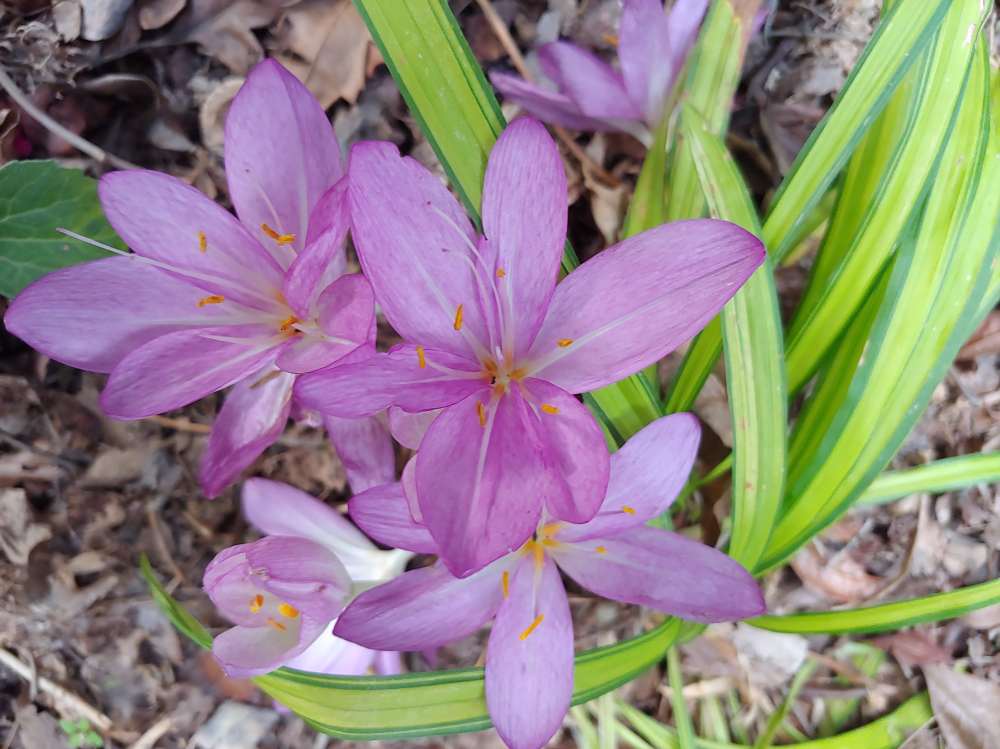
Several weeks ago, a small section of Carex ‘Banana Boat’ was transplanted, along with a patch of Allegheny spurge (Pachysandra procumbens). While digging, roots of Colchicum (above) were dug up, with a few sliced in half. All were replanted, and I kinda doubt these came up, but in any case, others are flowering that I managed to avoid. An order for more colchicum was placed sometime in August, but it hasn’t arrived yet, and either the bulbs will have been cooled to delay flowering, or they’ll be past bloom.
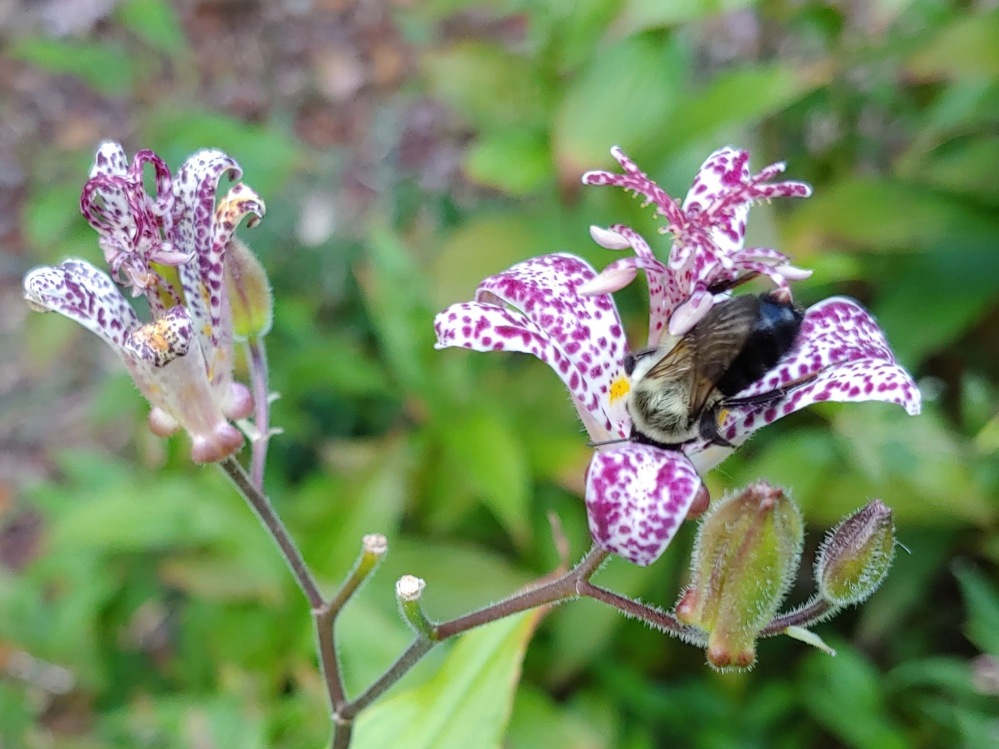
Toad lilies (Tricyrtis) are a highlight of the late summer, early autumn garden, with several flowering until the earliest frosts. Bees are particularly fond of toad lilies, burrowing into the vase shaped flower (above), or “stealing” nectar (below) by biting through the base of the flower.
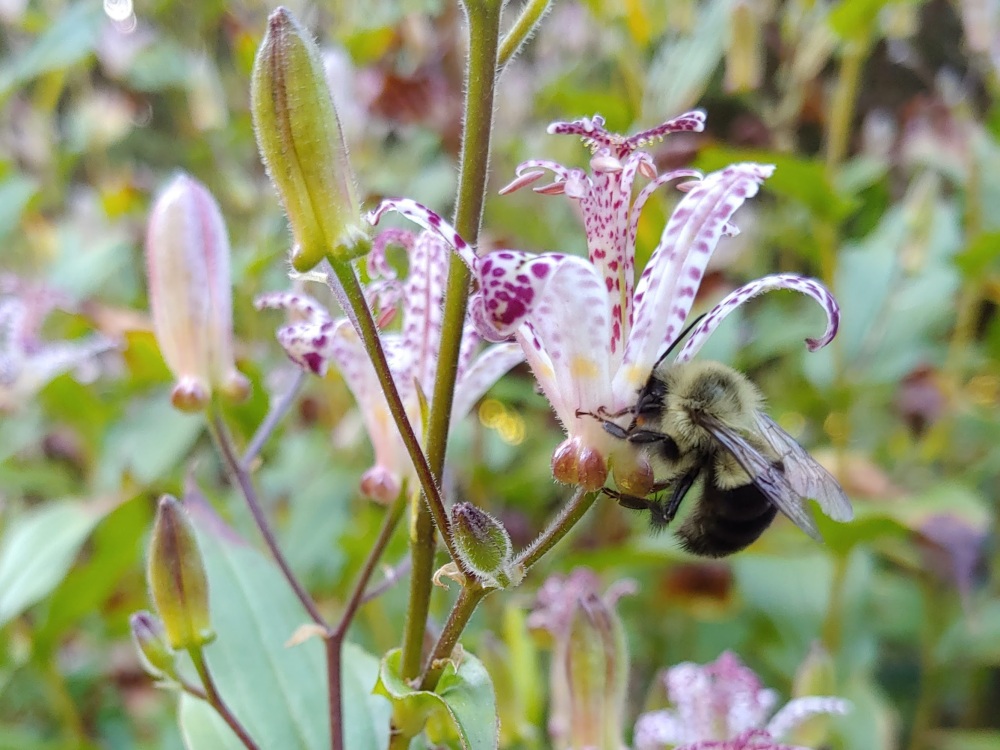
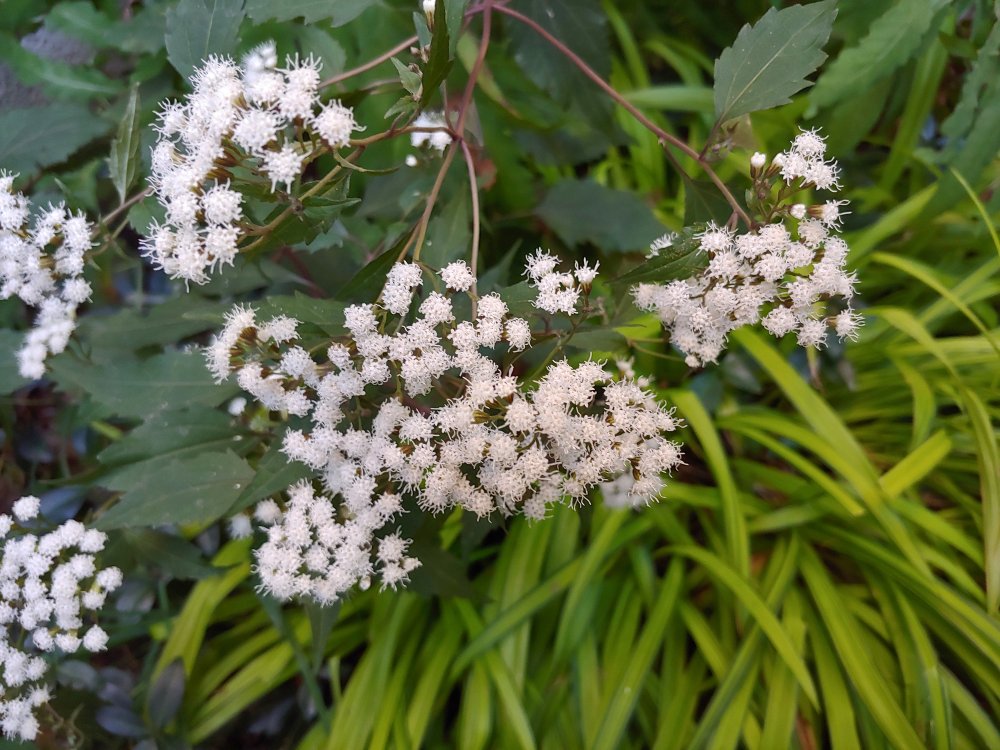
Seedlings of Chocolate Joe Pye weed (Eupatorium rugosum ‘Chocolate’, above) vary from light to dark colored foliage, but late summer flowers are always white. Here, a seedling rises through a clump of Carex ‘Banana Boat’.
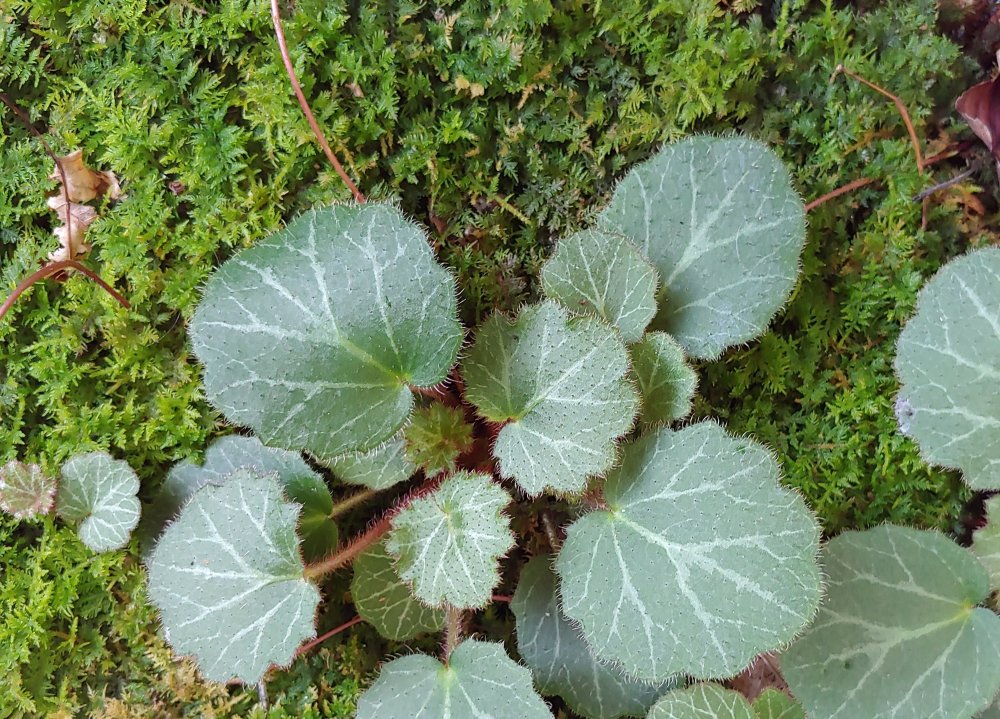
Accidental compositions are frequently my favorites. Strawberry begonia (Saxifraga stolonifera, above) creeps along the stream over a bed of moss. Sporelings of Japanese Painted ferns (Athyrium niponicum var. pictum, below) frequently pop up in the shaded rear garden, with occasional sporelings found growing on mossy stones.

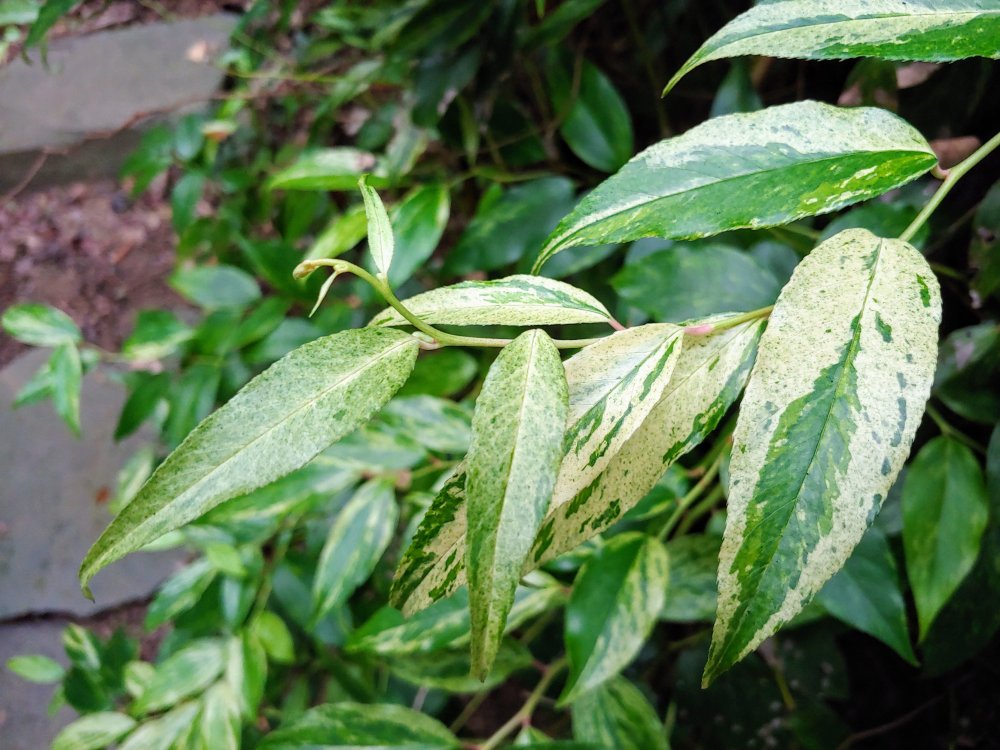
Rainbow leucothoe (Leucothoe fontanesiana ‘Rainbow’, above) is not a favorite, but there are moments when it is presentable. While too many plants are favorites, it is allowable for some to do nothing more than fill spaces.
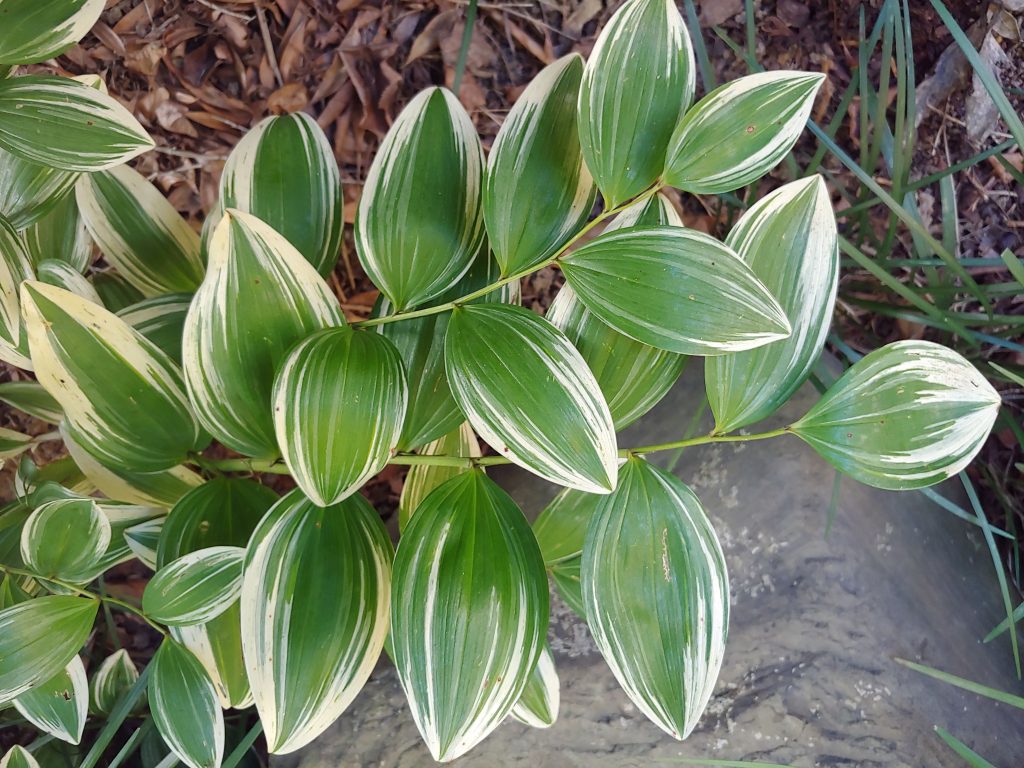
An advantage of planting in multiple locations is demonstrated by this variegated Solomon’s Seal (Polygonatum odoratum var. pluriflorum ‘Variegatum’, above). In early autumn the foliage is fresh, while others in dry shade look rather sad. Both areas are part shade, but the Solomon’s Seals thrive in this area, and look at their peak only through early summer in the drier shade.
So, there is Joe Pye weed with white flowers and green foliage? Must they be grown from seed, or are there some in nurseries like that too?
The nursery grown variety ‘Chocolate’ has darker leaves. This Joe Pye flowers much later than the more common Joe Pye.
but is there Joe Pye weed with green foliage and white bloom?
Seedlings of Chocolate vary in foliage color from green to dark. Both have white flowers. The green is not found in commerce that I’ve seen.
Got it. Joe Pye weed is one of those flowers that is so common in most regions of America, but that I have never seen. I sort of want to grow it, as well as goldenrod and beautyberry. When I do, I will grow the common type; but when you mentioned white flowers, that got my attention. I just don’t think I would try if it all (from nurseries) has dark foliage.
Actually . . . it seems to me that Joe Pye weed is one of those flowers that looks best in its ‘normal’ color anyway.
When the white flowered Chocolate proved to be short lived, I wasn’t bothered at all. Then, seedlings appeared, some in the same spots, but others poking out from under larger shrubs. The numbers of seedlings are easily controlled, and probably I wouldn’t pay money again, but I don’t mind the free seedlings.
Aahhh. This collection of summer turning to autumn is so refreshing! Now you’ve done it …. I must have ‘Banana Boat’. This Carex is a real looker! Thank you again for sharing your garden lovelies with us out here in the netherworld.